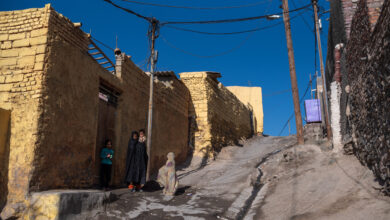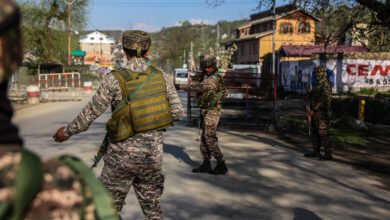
War theaters are not immune from intentional exaggerations, manipulation of information, and even deliberate fabrications to undermine the opponent.
However, what has been systematically propagated about the nature, popularity, strength, and other aspects of the Taliban insurgency is the new extreme, obfuscating realities on the ground and truths about the prolonged Afghan conflict.
If not fact-checked and debunked, these mythical propagations and misconceptions could cloud Afghan peace talks, making reconciliation hard, if not impossible, down the road.
Myth 1: Taliban Control or Contest Nearly Half of Afghanistan
Of all mythical propagations circulating about the Taliban, this is the most prevalent one, occasionally appearing in national and international media as well. However, a quick look at Afghanistan’s administrative division illustrates this baseless claim’s hollowness.
Afghanistan consists of 34 provinces, which are further subdivided into 421 districts and provincial capitals. The Taliban only control 21 districts, which comprises less than 5 percent of the country’s territory. The group does not control any of the 34 provincial capitals or large population centers.
There is no doubt the Taliban have a presence beyond these 21 districts and challenge the government’s monopoly of force in several areas, but that does not mean they control or contest half of Afghanistan.
A district or territory is contested only when its administrative control changes hands continuously between warring parties. The Taliban’s presence in most places does not pose that level of threat.
Night raids at Afghan security forces’ remote checkpoints are not the same as contesting administrative control of districts, nor is targeting Afghan security forces patrols with land mines. Similarly, popping up randomly in high ways like bandits and searching civilian buses for government employees does not constitute contesting a territory.
Furthermore, the rapid fall of Taliban attacks during the winter is evidence of their seasonal and sporadic presence. During harsh Afghan winters, most Taliban fighters retreat to Pakistan and shelter in Pakistani madrassas (religious schools) until their next annual spring offensive in Afghanistan.
A group controlling or contesting half of a country’s territory wouldn’t shrink and fade away in winters, and its leadership and high-ranking members would not hide, live, and die in a neighboring country.
Myth 2: Taliban Enjoy Popular Support
Another shallow claim. The Taliban does not have national sympathy for their cause, nor do they enjoy broader Afghan support. Quite the contrary, the Taliban are the most unpopular insurgency of Afghan resistance in millennia by any metric.
The absolute majority of Afghans – more than 80 percent – have “no sympathy” for the notorious group and over 90 percent “fear” for their lives while encountering the Taliban.

Moreover, over the last two decades, there were no single Afghan-organized pro-Taliban rallies within Afghanistan or anywhere on the planet Earth, which is the hallmark of popular national resistance movements enjoying moral support.
Furthermore, when comparing the number of Taliban fighter with their predecessor – the Mujahideen who fought and expelled the Soviets from Afghanistan in the 1980s – it is simply no match. At its peak, the number of Taliban fighters doesn’t even comprise one-fifth of the Afghan Mujahideen’s 250,000 strong force.
And finally, contrary to the mantra of the Taliban’s popularity, ordinary Afghan tired of the group’s unwanted presence and tyranny have repeatedly picked up arms and forced them out of their localities.
Myth 3: If Foreign Troops Leave, Taliban Will Overrun the Afghan Government
At best, this is a very wild guess and unsubstantiated claim about the future, and at worst, it is unduly exaggerating the insurgents’ capabilities. The Taliban cannot overrun the Afghan government for several reasons.
First of all, Afghanistan has nearly 400,000 well-trained, seasoned security forces whose resolve and determination to defend Afghanistan have amazed friends and foes alike.
Since taking full charge of the country’s security from US-NATO forces — whose combat missions officially ended and their numbers were drastically reduced in 2014 — the Afghan National Defense and Security Forces (ANDSF) have been doing an excellent job of foiling the Taliban’s destructive plans. Despite hemorrhaging thousands of casualties annually, the ANDSF has successfully kept the Taliban at bay and prevented them from making strategic gains.
https://twitter.com/MoDAfghanistan/status/1306171105892339718
Second, even if foreign troops leave Afghanistan without a peace deal, which is highly unlikely, it wouldn’t gravely affect the ANDSF capabilities and performance because since 2015, the residual US-NATO troops based in Afghanistan have been serving in supporting role – mainly training, advising, and assisting with logistics.
Third, foreign troops’ departure doesn’t mean the international community would turn a blind eye to Afghanistan and allow history to repeat itself. 9/11 is not a distant past, and therefore, the peace process’ conditionality is evidence of avoiding its recurrence. As part of the deal, the Taliban must cut ties with terrorists, renounce violence, and become part of an inclusive government.
And lastly, if the Taliban knew and were sure that they could overrun the Afghan government, they wouldn’t have engaged in talks.
Those who make superficial comparisons between Afghanistan today and Afghanistan in 1992 intentionally ignore or naively forget two things: (1) the Taliban does not enjoy the same popularity as the Afghan Mujahideen did, and (2) the current Islamic Republic of Afghanistan is not haunted by the same unpopularity as the 1992 Soviet-backed repressive communist regime, which was responsible for killing, maiming, and displacing millions of Afghans.
Myth 4: Taliban Have Changed; Taliban of 2020 Differs From Taliban of 2001
The Taliban’s warmongering narratives and actions, as well as their highly uncompromising stance and bullish demands, speak louder than their verbally painted good boy image.
Sitting across the table with Americans and signing a highly one-sided peace deal favoring the insurgents, which the Taliban see as a military victory, doesn’t mean the group has changed.
Killing and injuring nearly 10,000 Afghan security forces after signing a peace deal with Donald Trump’s administration just to get their 5,000 terrorist fellows out of jail is not a sign of commitment to peace and reconciliation. Rather, it is evidence of the Taliban’s inflexibility and violent bargaining strategy if things don’t go their way.

Calling their annual offensive Al-Fath (victory) and offering amnesty to Afghan security forces on the eve of intra-Afghan negotiations is not a sign of compromise and change, but an attitude of the victorious side showcasing their domineering tendencies and winner mentality.
Likewise, wrapping up women’s right issues to their own understanding and interpretation of religion isn’t a sign of progress and respect for the better half of the population. Rather, it is an alarming red light and early signs of attempts to bury Afghan women’s advancements.
And above all, insisting on abolishing the post-2001 democratic (but Islamic) and highly inclusive Afghan political structure isn’t a sign of political maturity or a move towards a power-sharing arrangement, but rather a threat to the hard-earned achievements of the last two decades.
Looking at their mentality, attitude, and treatment of people in areas under their control, especially women and girls, anything less than or identical to their former repressive “Islamic Emirate” is unacceptable for the Taliban. Otherwise, power can be shared, and insurgents can be integrated without the need to halting the progress, going back and shaking up the very foundations suitable for settling political disputes and crucial to lasting peace.
Myth 5: Pakistan Has Little Influence Over Taliban
The main objective behind deceptive propagations like this is to camouflage Pakistan’s double game and destructive interferences in Afghanistan.
Pakistan was not only the architect of the Taliban movement and strategist of their rise to power back in the 1990s, but the country has also been the movement’s safe haven since they were ousted from power in 2001. Furthermore, Pakistan has been the enabler of the Taliban’s resurgence and has been assisting its bloody campaign ever since.
Pakistani support and safe havens were the main factors protecting the Taliban from the Afghan and international forces’ onslaught over the last two decades. Take Pakistan’s role out of the Afghan war equation, and the Taliban’s so-called deadly force and notorious movement wouldn’t last long. They would crash and vanish within weeks as they did in the aftermath of 9/11.
At cashing in time, the old denial is gone not just from civilian side of Pakistan — here is the former FM with chants of ‘Allah u Akbar’ in support of Taliban — but also military establishment: Afghan VP saleh said Gen. Bajwa told him ‘yes we supported Taliban;let’s talk future’ https://t.co/MqP1KDQYzJ
— Mujib Mashal (@MujMash) September 14, 2020
Those closely following the Afghan conflict know Pakistan’s patronizing relationship with the Taliban and the level of influence the country exerts over the group. The current peace process is a case in point. It has been moving and making progress, albeit slowly, simply because it has Pakistani military and intelligence establishments’ support.
Past negotiation attempts by both Barack Obama’s administration and Hamid Karzai’s government collapsed due to Pakistan’s tacit sabotage campaign. Any high-ranking Taliban member who showed a green light to peace and reconciliation was arrested or killed in Pakistan.
Included in the list was Mullah Abdul Ghani Baradar, the Taliban’s second in command who is currently in charge of the peace talks. Mullah Baradar was arrested in the Pakistani port city of Karachi in 2010 for daring to reach out to the Afghan government. He was released last year when the US-Taliban peace talks gained momentum.
In 2012 alone, Pakistani intelligence services arrested nearly 100 Taliban leaders and members who talked to the Afghan government, UN, or the US. This led one high-ranking Taliban official to disclose, “If Pakistan allows the Taliban and other Afghan groups to talk together freely, then peace in Afghanistan is a real possibility.”
Ghulam Farooq Mujaddidi is a protective security expert, Fulbright scholar, and independent researcher. His research interests extend from state-building challenges in war-torn countries to insurgency and suicide attacks, with a particular focus on Afghanistan.
Disclaimer: The views and opinions expressed here are those of the author and do not necessarily reflect the editorial position of The Defense Post.
The Defense Post aims to publish a wide range of high-quality opinion and analysis from a diverse array of people – do you want to send us yours? Click here to submit an op-ed.











